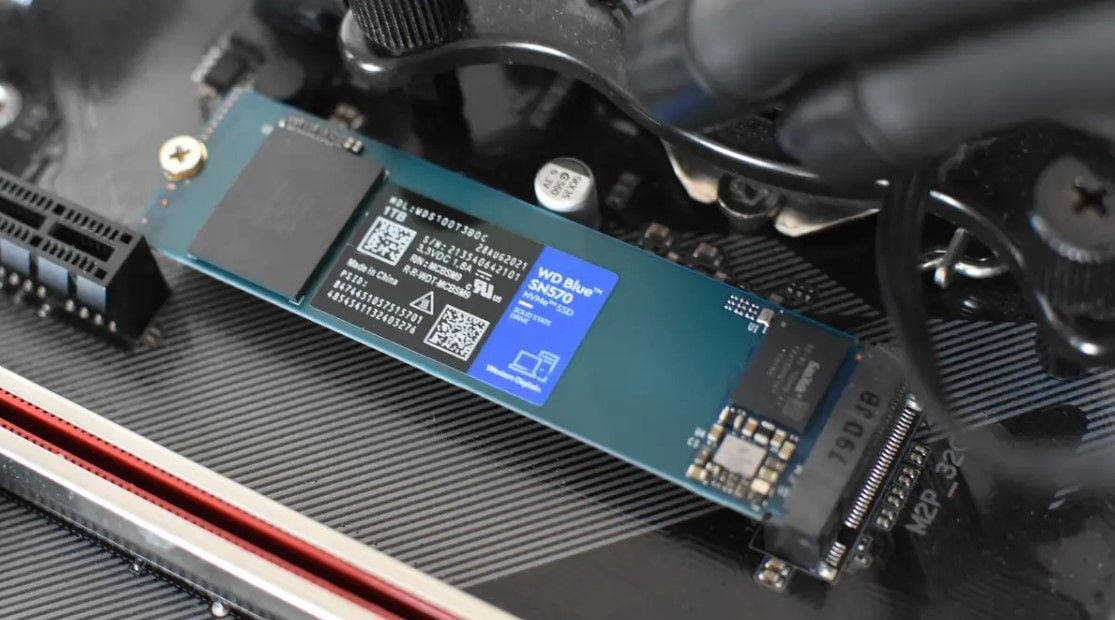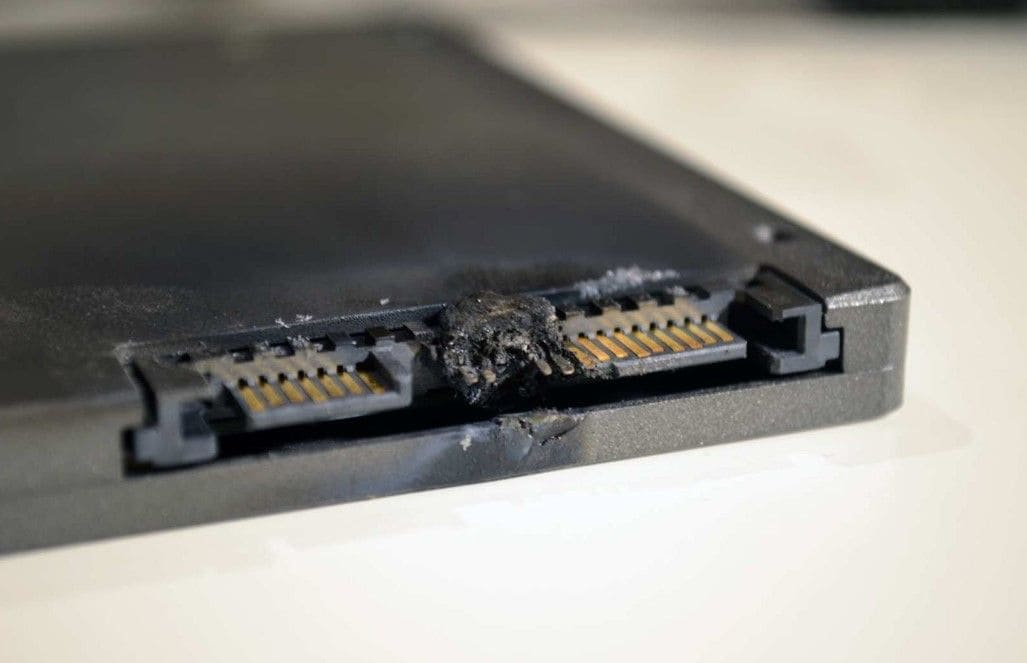Have you noticed your SSD is starting to malfunction? You might experience random error messages, missing files, and frequent freezes and crashes. That means your SSD is failing. Luckily, we've prepared a guide to failed SSD recovery.
You'll learn about the causes of your SSD drive failure and the best methods to recover data from a failed SSD. Let's get to it.
Table of Content
How To Recover Data From a Failed SSD
Now that we've covered the causes of SSD failure, it's time to help you recover lost data, which isn't gone forever. Here are the two safest ways to retrieve your lost SSD data.
Option 1: Use Wondershare Recoverit
One way to recover data from a failed SSD is to do it yourself. You can use a professional SSD data recovery tool to restore all lost data. In this tutorial, we have chosen Wondershare Recoverit. This tool allows you to recover all file types, including videos, audio, photos, files, emails, etc.
Wondershare Recoverit doesn't only work with SSD corruption. You can recover files even if you lost them due to accidental deletion, SSD formatting, data transfer interruption, computer crash, etc. With its advanced technology and intuitive user-interface, Wondershare Recoverit can help you retrieve files in just a few clicks.
Easily recover deleted or lost files from 2000+ storage devices like HDDs, SSDs, external drivs, USB drives, memory cards, and more. The software confidently retrieves all data types, regardless of how they went missing.
Follow these steps to recover files using this failed SSD recovery software:
- Connect your failing SSD to your computer.
- Install and open Wondershare Recoverit.
- Find and click your failing SSD in the Hard Drives and Locations section.

- That will start the scanning of your failing SSD. You can monitor the process at the bottom of the screen, where you can pause and stop it.

- Once the scan is complete, preview the recovered files. Click Recover to restore them and choose a path to save them to a different location.

Option 2: Contact a Professional Data Recovery Service
In some situations, you can't recover data on your own. If your SSD is damaged or overheated, it's best not to try fixing or retrieving data from it yourself. SSDs are delicate; even a minor mishandling can cause permanent data loss.
Fortunately, professionals can handle these problems and help you recover your precious data. Thus, find a reliable, professional data recovery service nearby and take your crashed SSD to the experts.
How To Repair a Failed or Crashed SSD to Regain Usability
Once you recover your data, it's safe. However, your SSD is still unusable. You can't use a failed or crashed SSD until you fix it. Therefore, check out the five best methods to help you regain the usability of your crashed SSD.
Method 1: Update SSD Drivers
Your SSD will malfunction and fail if your SSD drivers are outdated because they enable your SSD to function normally on your computer. Thus, if they're faulty or out-of-date, you won't be able to use your SSD.
To update your SSD drivers, follow these steps:
- Press the Windows key + X and open Device Manager.

- Scroll down until you find Disk drives. Click the option to expand it.

- Right-click your SSD and click Update driver.

- Once the update is complete, reboot your computer.
Method 2: Update SSD Firmware
Your SSD firmware could be outdated or corrupted. If it is, you could have problems accessing your SSD. As you know, SSD firmware must be up to date for your SSD to function correctly. Thus, you must update it to make your SSD usable again.
Follow these steps to update your SSD firmware:
- Press the Windows key + X and select Device Manager.

- Expand the Disk drives section.
- Right-click your SSD and select Properties.

- Switch to the Details tab. Select Hardware Ids from the drop-down list and click OK.

- Run the SSD firmware update tool to finish the process.
Method 3: Run CHKDSK
Another way to fix your failed SSD is to use the CHKDSK command. It checks your disk for errors and eliminates them for you. However, you run it in the Command Prompt, which lacks a graphical user interface.
Therefore, follow our steps carefully to run the CHKDSK command successfully:
- Type cmd into the search bar.
- Right-click the Command Prompt and select Run as administrator.

- Type this command: chkdsk d: /f /r /x (Replace d with your SSD's assigned drive letter). Press Enter.
Let the program scan your SSD for errors and fix them. Once it finishes, you can access your SSD.
Method 4: Rebuild MBR
MBR stands for Master Boot Record. It's a partition table scheme that stores information about disk partitions. Your SSD won't work if its MBR is broken. However, rebuilding the Master Boot Record is a bit complicated, so follow these steps carefully:
- Create a Windows OS USB bootable media.
- Change the firmware settings to start from the USB bootable media.
- Start your computer from your bootable USB.
- Click Next in the Windows Setup.

- Select Repair your computer.

- Go to Troubleshoot > Advanced options and click Command Prompt.

- Launch the troubleshooting utility by typing bootrec.exe and pressing Enter.
- Run the bootrec /fixMbr command to repair and rebuild the MBR.

- Press the X key to close the Command Prompt.
- Restart your computer.
Method 5: Format the SSD
If none of the methods above fixed your SSD, it's time to format it. Formatting your SSD will delete all the data besides eliminating the error causing it to malfunction. If you haven't backed up your SSD before formatting it, you can use Wondershare Recoverit to restore your lost files.
Follow these steps to format your SSD to fix it:
- Press the Windows key + X and open Disk Management.
- Locate your SSD that needs formatting. Right-click it and select Format.

- Set the desired file system and tick the Perform a quick format checkbox. Click OK to format your SSD.

Why Does an SSD Fail?

SSDs can fail for various reasons. Depending on the cause of its failure, you can fix it with several methods. Before exploring them, let's establish the underlying reason for your SSD crash.
Reason 1: Improper Usage
SSDs are very delicate and can crash due to mishandling. If you wear out your SSD, it'll quickly start to fail. That can happen if you constantly use it through electric fluctuations, forcibly shut down your PC, or always write random, unsafe information to the drive.
Reason 2: Data Corruption
SSDs serve the purpose of storage devices, where you keep all your data. However, if your data is corrupted, it'll cause bad sectors on the drive and data loss. Thus, you must be careful with the files you store on your SSD.
Reason 3: Firmware Issues
You can update your SSD to improve it if it's getting slower. However, if you suddenly interrupt or incorrectly install the update, your SSD update can fail and cause firmware issues. Firmware updates are delicate and require a careful and correct approach.
Reason 4: Physical Damage

While SSDs are less prone to mechanical problems than HDDs, they can still suffer physical damage. Some external factors include humidity, water, and dust. If you drop or scratch your drive, you could also experience data loss and SSD malfunction.
Reason 5: Overheating
Overheating is one of the most common reasons for SSD failure. Your SSD could overheat if you overuse it and run it for extended periods. A proper cooling system will prevent it from overheating and failing.
Can You Recover Data From a Failed or Crashed SSD?
Yes, you can recover data from a failed or crashed SSD. However, the data recovery method differs depending on the cause of your SSD failure. You can recover data at home or contact a professional.
| Data recovery solution | Cause of SSD failure |
| Data recovery tool | Improper usage Data corruption Firmware issues |
| Professional data recovery service | Physical damage Overheating |
If your SSD fails due to improper usage, data corruption, or firmware failure, you can use a data recovery tool like Wondershare Recoverit to restore data on your own. However, you must contact a professional data recovery service if your SSD crashes due to physical damage or overheating.
Summing Up
If your SSD is acting unusual, it might be failing. Various reasons can cause the SSD to fail, such as improper usage, firmware issues, data corruption, overheating, or physical damage. Unfortunately, SSD failure often results in data loss.
However, in most cases, you can recover files from a failed SSD using Wondershare Recoverit. If your SSD has physical damage, contact a professional data recovery service. Once you retrieve your data, you must fix your SSD by formatting it, updating its drivers and firmware, running the CHKDSK command, or rebuilding the MBR.
FAQs
-
Why is my SSD failing?
Your SSD can fail due to numerous reasons. Some of the most frequent causes of SSD failure include improper usage, data corruption, firmware problems, physical damage, and overheating. -
Is my crashed SSD data lost forever?
The answer is no. You can recover files from a failed or crashed SSD. If your SSD has logical issues, you can use a data recovery tool like Wondershare Recoverit. However, contact a reliable, professional data recovery service if it has physical damage. -
My SSD crashed. What can I do?
If your SSD crashes, you can make it usable with several methods. You can try updating your SSD drivers and firmware. If that doesn't help, you can run the CHKDSK command, format your SSD, and rebuild its MBR.



 ChatGPT
ChatGPT
 Perplexity
Perplexity
 Google AI Mode
Google AI Mode
 Grok
Grok























